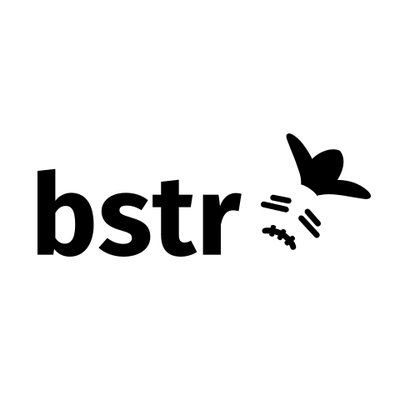- cross-posted to:
- programming@programming.dev

I just write my config files directly to random unused blocks on /dev/sda, filesystems are overrated.

Nah, dump em’ to /tmp/ and let the user figure out the rest

/dev/null

I absolutely despise the following directories: Documents, Music, Pictures, Public, Templates, Videos. Why? Because applications randomly dump stuff into these directories and fill them with junk files. I don’t want any application putting anything into directories I actually use, unless I explicitly tell them to. It is not possible to keep your files organized if applications randomly dump trash files into them.

This is why I’ve made a “Filing Cabinet” directory. My stuff goes in there nice and organized, while I ignore the rest.

Y’know what’s worse? When there’s no dot. Worse than that, it’s an undotted directory used to store a single config file. Ugh, unpleasant memories. 😒

One of my greatest pet peeves is random folders appearing in my home folder. Thanks for this

Let’s count them. (not including legacy or standard locations like .local, .config, or .cache, .ssh, and shell configuration files
- .aws
- .azure
- .bun
- .byobu
- .cargo
- .dbus
- .docker
- .dokku
- .keychain
- .kube
- .minikube
- .motd_shown
- .node_repl_history
- .npm
- .nuxt
- .nuxtrc
- .nvm
- .oh-my-zsh
- .pack
- .psql_history
- .pyenv
- .python_history
- .redhat
- .ruff_cache
- .rustup
- .selected_editor
- .sqlite_history
- .sudo_as_admin_successful
- .tmux.conf
- .tox
- .ts_node_repl_history
- .vim
- .viminfo
- .vimrc
- .vscode-server
- .wget-hsts
- .yarn
And a couple more, non-hidden files for Go.
- go
- sdk/go1.20

Why aren’t all of these just normal directories under either .local (for data files) or .config (for configuration)???
Actually, I think the XDG directories should be under a single XDG directory either dotted or not (a better name would be OK with me) ~/xdg/Documents, ~/xdg/Music, ~/xdg/Pictures etc.

That’s the beauty: XDG compliant applications are entirely configurable using standardized environment variables.

Documents, Music, etc actually are configurable. Just edit
~/.config/user-dirs.dirs
I also had to (under KDE)
-
Edit the settings for each of the folders in Dolphin (The file manager)
-
Edit the location of the desktop folder in the settings found by right-clicking the desktop and going into “Configure Desktop and Wallpaper” Location.
-
Edit the show item by choosing Custom Location, and adding the XDG directory for the desktop. This setting may not stick.
-

Is it a problem to change this?

They may not want their configuration stored in $HOME, for example:
they’re on a machine that isn’t under their physical control and ~/.config is mounted over the network from their personal machine;
That sounds like it’s a bad way to handle configuration, since among many other problems, it won’t work with the many programs that do have dotfiles in home directory, but even if that happened, you could just symlink it.
they prefer to version control their configuration files using git, with a configuration directory managed over different branches;
I do that. I symlink that config into a git-controlled directory. If OP plans to put his entire ~/.config in git, he is doing things wrong, because some of that needs to be machine-local.
the user simply wants to have a clean and consistent $HOME directory and filesystem
If whatever program you are using to view your home directory cannot hide those files, it is broken, as it does not work with a whole lot of existing software.
less secure,
If your home directory is “not secure”, you’re probably in trouble already.
Like, there are reasons you may not want to put dotfiles in a homedir, but none of the arguments in the article are them.
EDIT: I will ask developers to stop dumping directories and files that don’t start with a dot in people’s home directories, though. I gave up over twenty years ago and put my actual stuff under ~/m just to keep it from being polluted with all the other things that dump non-dotfiles/-dotdirs in a home directory. Looking at my current system, I have:
-
A number of directories containing video game saves and configuration. I am pretty sure that these are mostly bad Windows ports or possibly Windows programs under WINE that just dump stuff into a user’s home directory there (not even good on Windows). Some are Windows Steam games.
-
WINE apparently has decided that it’s a good idea to default to sticking the Windows home directory and all of its directories in there.
-
Apparently some webcam software that I used at one point.
-
A few logfiles

I agree with most of your points, but I still think putting configs in the xdg dir instead of putting tons of dotfiles in $HOME is good practice.
I find dotfiles to be that stuff that I want to edit easily, and xdg stuff to be that stuff that I don’t edit frequently (manually at least)
-

The rust library mentioned there doesn’t support system install paths for windows or macOS, it only uses XDG. I recommend the
directoriescrate which properly supports Linux, Mac, and Windows.
Thanks I was going to look for one with multi OS support :)

Nix and Home Manager have been my go-to for managing dotfiles and symlinks in my home dir

If a program just uses
$HOMEor someone starts writing a new application, how is that supposed to help?
You can manage symlinks pretty easy with home-manager. I’d personally setup symlinks for these app configuration directories if I don’t want them storing files directly on the disk I use for
$HOME. It’s also done in a delcarative way that can persist across multiple computers.
I’m not sure I understand. So you create a symlink from
$HOME/.program.inito something in the nix store? If so, how does that solve the problem of clutter in$HOME?
If so, how does that solve the problem of clutter in $HOME ?
If it wasn’t clear from my message, the problem(s) these tools are solving for me would be 1. not having to keep track of my dotfiles and their directories, and 2. not storing configuration files directly on the disk I use for the
$HOMEdir. I’m not claiming these tools would solve clutter in the$HOMEdir. Further, I think it should be alright for me to share tools for managing configuration files in your home directory in a discussion that directly relates to that subject.So you create a symlink from $HOME/.program.ini to something in the nix store?
Normally it’s the other way around. When you use nix and home-manager, you’re technically generating files that will live in the nix-store and nix/home-manager will take care of symlinking those files to locations in your
$HOMEdir.In this scenario though, I would use the https://nix-community.github.io/home-manager/options.html#opt-home.file option from home-manager to create a symlinks to a location that’s outside of my
$HOMEdir so those files don’t have to live on my home disk.My particular use-case is that I want persistent configuration files that are shared throughout a handful of devices on my network. To this end, I use some home-manager symlinks that lead to a network folder where all these various directories and configuration files actually live. I edit those configurations in a single place and their changes propagate across the network to all the devices that would use them.

You’re right, it doesn’t. That does give me an idea though.
You could use overlayfs with an opaque upper directory to hide the files littering your $HOME and still access them by bind-mounting them into the appropriate xdg dirs.
Way more effort than it’s worth, of course.

Me staring aggressively at Steam, Zotero, and bash:
(And more)

Someone should pass this on to valve.

.word
Yes please!

Tangentially related: I recently learned that there are tools for handling dotfiles such as chezmoi and yadm. I would suppose that after spending some time on backing up the dotfiles that matter one can purge the remainders without much issue. I also remember some tool that was made for the purpose of cleaning $HOME, but can not recall its name (if anyone knows please let me know).

xdg-ninja maybe?

Yes, that is the one. Thanks!

I’d like to set nautilus to show hidden files, but I can’t stand the amount of “trash” there’s in home
Everyone is thinking “my app is the best, it totally deserves a ~/.myappisthebest directory”

W should make a .dotfiles directory for them.

Hmmmmmm
No.


